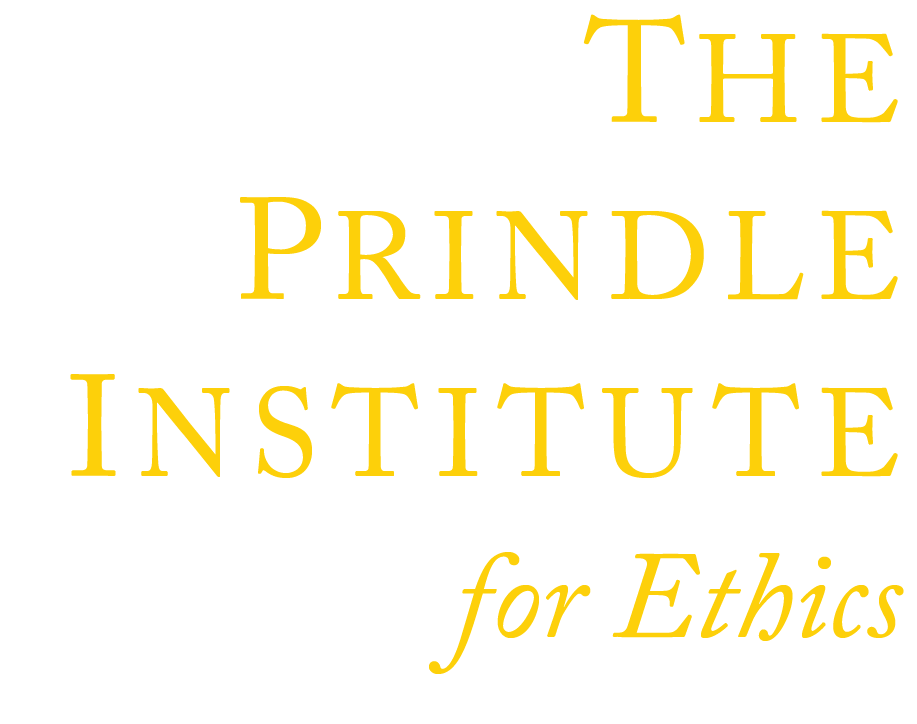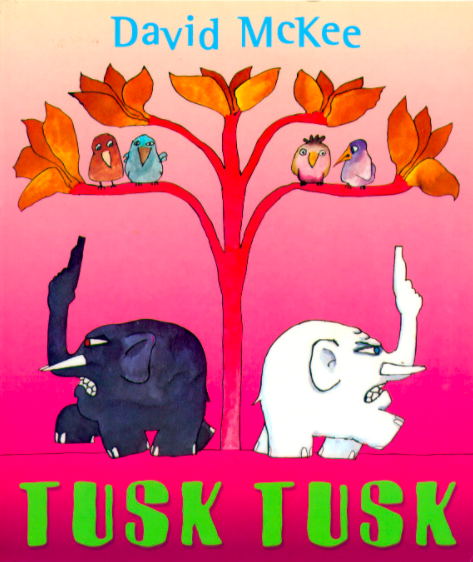Tusk Tusk
Book Module Navigation
Summary
Tusk Tusk serves as an excellent departure point for philosophical discussion with elementary-aged students about prejudice, discrimination, and violence.
In Tusk Tusk black and white elephants wage a war against one another. The peace-loving elephants disappear into the jungle and the other black and white elephants kill each other. For many years there are no elephants in the world, until the grandchildren of the peace-loving elephants emerge from the jungle.
Read aloud video by Jaki the Teacher
Guidelines for Philosophical Discussion
David McKee’s book Tusk Tusk raises many complex issues in a short span of time. It serves as an excellent departure point for philosophical discussion with elementary aged students about prejudice, discrimination, and violence.
In the story, two groups of elephants – black and white – hate each other so much that they wage war against one another. A group of peace-loving elephants go deep into the jungle and are not seen again. In the meantime, all of the other black and white elephants kill each other. For many years there are no elephants in the world, until the grandchildren of the peace-loving elephants emerge from the jungle. These elephants are all the same color: they are grey. However, the book ends on a foreboding note: “…the little ears and the big ears have been giving each other strange looks.” The reader is left to predict what will happen next. Will the grey elephants uphold their grandparents’ peace-loving ideals? Or will they wage war against each other as their ancestors had done over the color of their skin? These questions may be an excellent way to start a discussion of the book. A discussion beginning with questions about the nature of the “peace-loving” elephants could result in a more broad philosophical discussion on the nature of humans. If the grey elephants were peace-loving, why were they still finding fault with one another’s appearance? Would you still consider the elephants to be peace-loving even though they were prejudiced toward each other? Do you think it is possible to not be prejudiced at all and to never judge someone based on a character trait? Some would argue that humans are inherently prejudiced and will never escape this cycle of discrimination. Some would argue otherwise. See what your students have to say!
Facilitators may also choose several other departure points to begin a philosophical discussion with students based on Tusk Tusk. The topic of prejudice is perhaps one of the most prevalent throughout this story, however different approaches to the topic may be taken. A slightly different approach to the topic from that mentioned above is the notion of moral implications of prejudice. Is discrimination wrong independently of the context within which it occurs? Some philosophers believe that not all prejudice is equal. Others would argue that all types of prejudice are equally morally wrong. Using these question sets, facilitators can delve into the issues of morality and prejudice with students. The elephants in the story did not like each other because of the color of their skin. Is this a fair judgement? Do you think it is the same to judge someone because they look different than you as it is to not like someone because they were mean to you? These types of questions can guide the students toward a discussion about the larger issue of the morality of prejudice and whether or not all prejudices are equally wrong. Another point of departure for discussion about Tusk Tusk may be the theme of judging someone’s character based on their outer appearance. What is the relationship between a person’s outer characteristics and their inner qualities? Does one’s appearance or physical characteristics reflect one’s inner characteristics? Are they two separate things? The elephants in the story did not like each other because they looked different from one another. Do you think that is fair? Do you think that the elephants’ skin color means that they are bad?
Lastly, Tusk Tusk raises the issue of the morality of violence. Upon first thought, most would say that violence is not a good way to solve problems. However, some philosophers have argued that in our world today, non-violence doesn’t always work to solve problems. The black and white elephants kill each other because they do not like each other. Is it good to hurt someone because you don’t like them? Is it always wrong, or do you think that it is acceptable to use violence to solve problems sometimes? Should the peace-loving elephants have run away, or could they have done something to help solve the elephants’ problems?
Educators and parents alike may choose any, or all of these issues to discuss with their students and facilitate powerful philosophic inquiry regarding prejudice, violence, and human nature.
Questions for Philosophical Discussion
Violence
The black and white elephants kill each other because they do not like each other. The peace-loving elephants run away.
- Have you ever hurt someone because you didn’t like them?
- Has anyone ever hurt you because they didn’t like you?
- Is it good to hurt someone because you don’t like them?
- Is it always wrong, or do you think that it is okay to use violence to solve problems sometimes?
- Can you think of examples when it would be wrong?
- When would it be acceptable?
- Should the peace-loving elephants have run away, or could they have done something to help solve the elephants’ problems?
Character
The elephants in the story did not like each other because they looked different from one another.
- Do you think the elephants’ skin color or the size of their ears means that they are bad elephants?
- Do you think that the way you look on the outside reflects your inner qualities (i.e. your personality)?
- Can you dislike someone before you even get to know them?
Prejudice
The elephants in the story did not like each other because of the color of their skin.
- Would you dislike your friend if they had bigger or smaller ears than you?
- What if they had a different color skin than you?
- Do you think it is okay to judge someone because they look different than you do?
- Is it the same thing to not like someone because they look different than you as it is to not like someone because they were mean to you?
At the end of the book the grey elephants don’t like each other because they have little and big ears.
- If you were to continue writing the story, what would you write?
- Do you think that the elephants will stay peaceful or will they wage war against each other like their grandparents did because of the color of their skin?
- What does it mean to be peace-loving?
- If the grey elephants were peace-loving, why were they still finding fault with one another’s appearance?
- Would you still consider the elephants to be peace-loving even though they were prejudiced towards each other?
- Do you think it is possible to not be prejudiced at all and to never judge someone based on a character trait?
Original questions and guidelines for philosophical discussion by Sulaiha Schwartz. Edited May 2020 by The Janet Prindle Institute for Ethics.
Find tips for leading a philosophical discussion on our Resources page.






